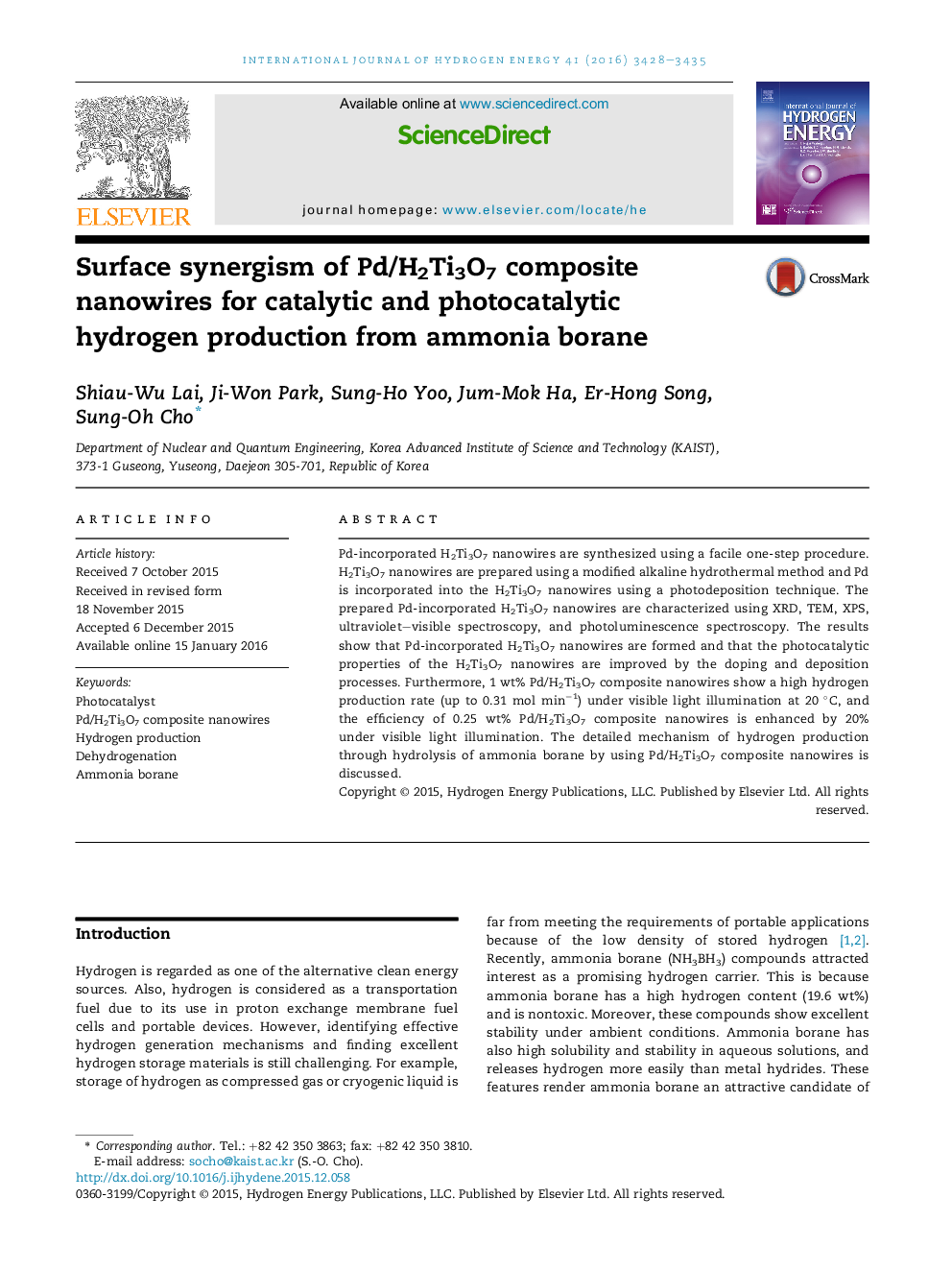| Article ID | Journal | Published Year | Pages | File Type |
|---|---|---|---|---|
| 1270246 | International Journal of Hydrogen Energy | 2016 | 8 Pages |
•Pd/H2Ti3O7 was synthesized by one-step procedure.•The band gap was shifted through Pd-doped, leading to the visible light response.•Pd/H2Ti3O7 revealed good visible light-driven photocatalytic activity.•The enhancement of H2 production rate could be assigned to the surface synergism.
Pd-incorporated H2Ti3O7 nanowires are synthesized using a facile one-step procedure. H2Ti3O7 nanowires are prepared using a modified alkaline hydrothermal method and Pd is incorporated into the H2Ti3O7 nanowires using a photodeposition technique. The prepared Pd-incorporated H2Ti3O7 nanowires are characterized using XRD, TEM, XPS, ultraviolet–visible spectroscopy, and photoluminescence spectroscopy. The results show that Pd-incorporated H2Ti3O7 nanowires are formed and that the photocatalytic properties of the H2Ti3O7 nanowires are improved by the doping and deposition processes. Furthermore, 1 wt% Pd/H2Ti3O7 composite nanowires show a high hydrogen production rate (up to 0.31 mol min−1) under visible light illumination at 20 °C, and the efficiency of 0.25 wt% Pd/H2Ti3O7 composite nanowires is enhanced by 20% under visible light illumination. The detailed mechanism of hydrogen production through hydrolysis of ammonia borane by using Pd/H2Ti3O7 composite nanowires is discussed.
Graphical abstractFigure optionsDownload full-size imageDownload as PowerPoint slide
